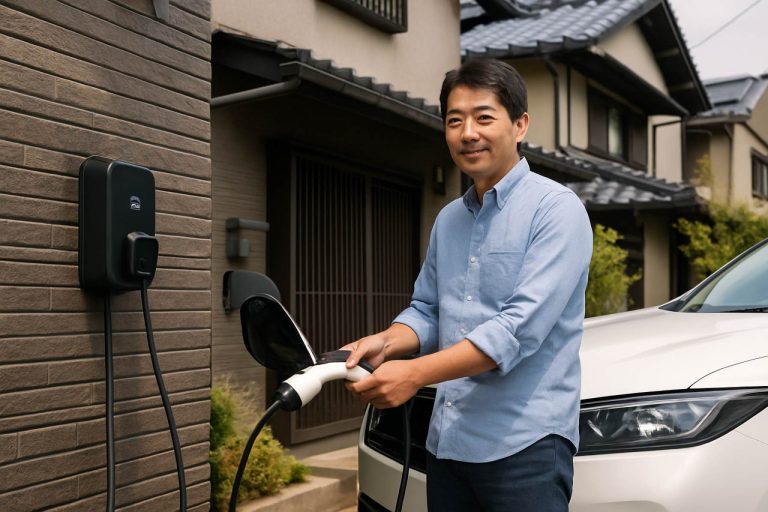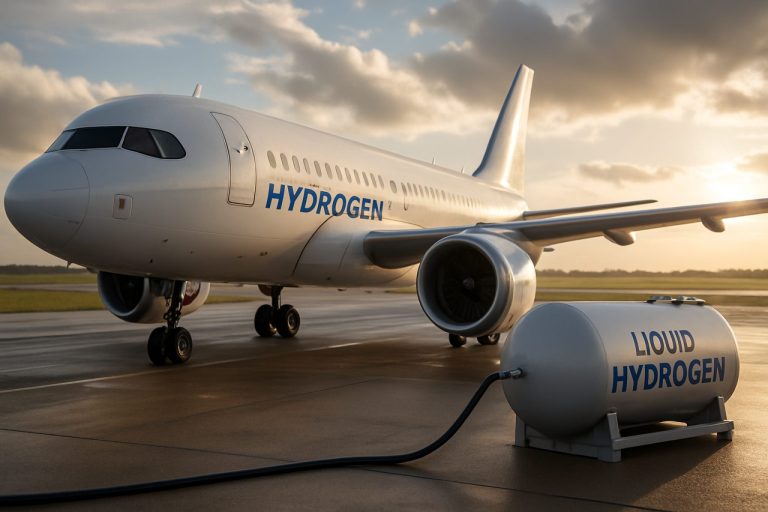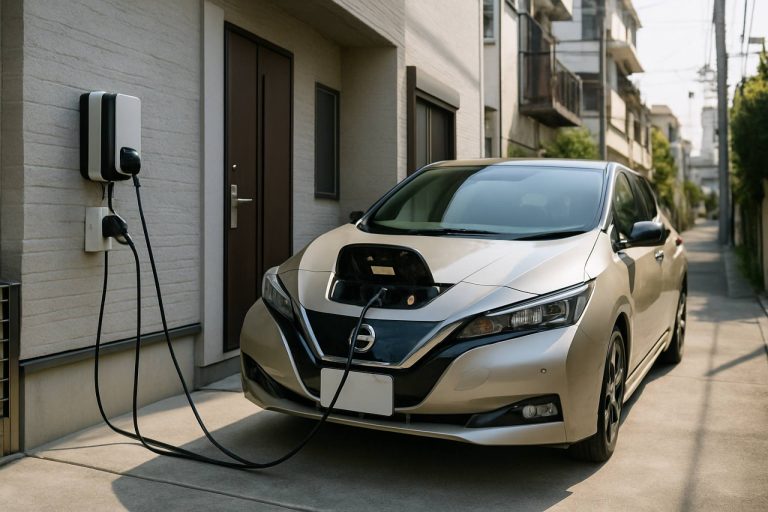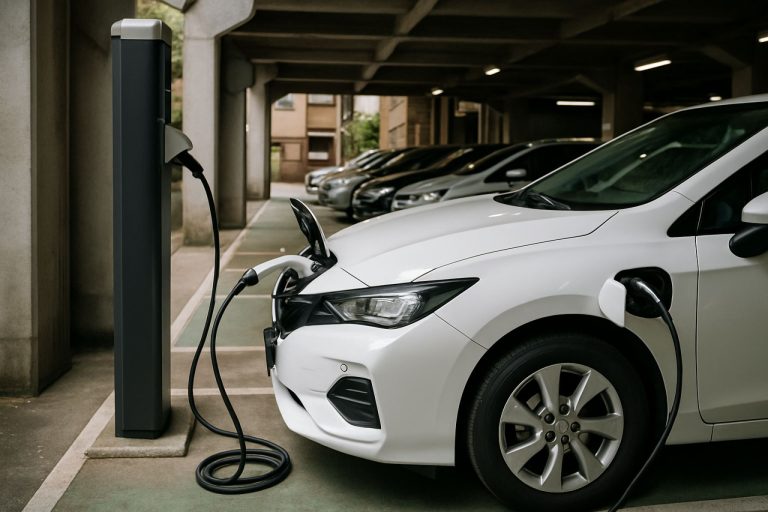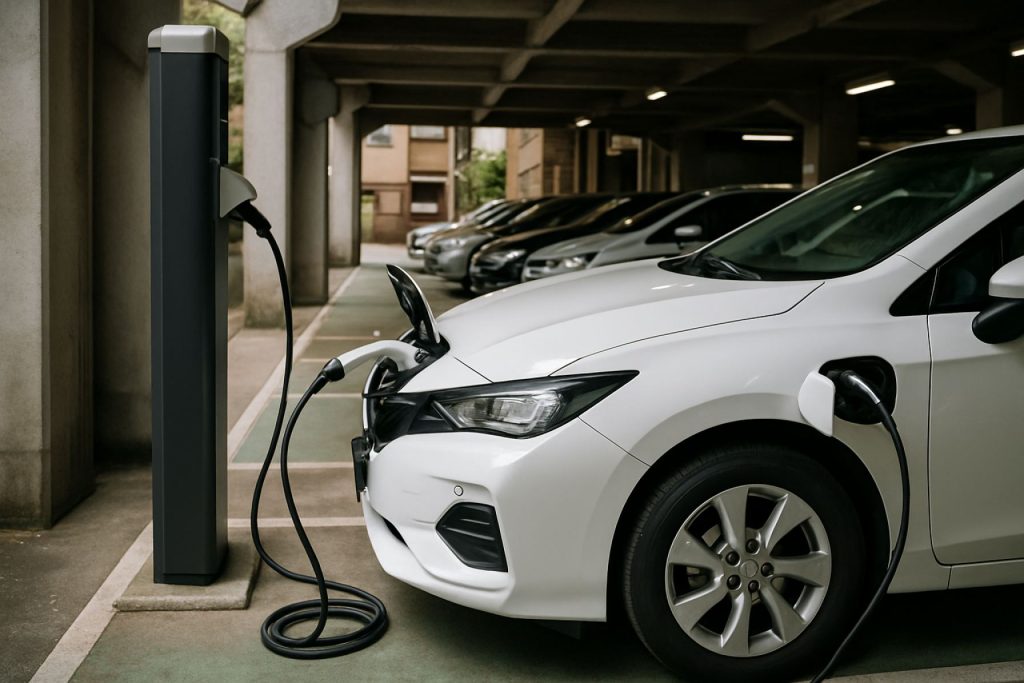
- Tokyo is turning vacant lots and underused land into EV charging stations to accelerate electric vehicle infrastructure growth.
- Landowners pay no installation, maintenance, or monthly fees—making it easy to participate in the city’s EV expansion.
- Terra Charge, a leader with 15,000+ chargers in Japan, drives this initiative and offers new income streams for property owners.
- The goal is to multiply charging locations, supporting the city’s aim for all new car sales to be electric by 2035.
- Repurposed sites could serve as emergency energy hubs for local communities in times of need.
- Mobile app integration ensures 24/7 access, simple payments, and real-time charger information for EV drivers.
Rusted fences stand guard over vacant lots, weeds push through cracked concrete, and asphalt-blanketed corners gather dust between Tokyo’s towers. These idle spaces, once afterthoughts in the city’s relentless march, are about to become unlikely heroes in Japan’s race toward an electric future.
From May 28, a new initiative is set to reshape the city’s EV infrastructure. The plan transforms underused land—those empty corners, silent parking spots, and slumbering patches beside commercial hubs—into fast-charging stations for electric vehicles, all at no cost to landowners. No installation fees, no monthly bills, not even a maintenance charge.
This bold step hardly comes too soon. Tokyo’s ambition: by 2035, not a single gasoline-powered car should claim space in new vehicle sales. But for EV drivers, finding a charging spot in the city’s concrete labyrinth can feel like striking gold. Infrastructure, long the bottleneck, now stands to be multiplied—by 100 new stations, if stakeholders move fast enough.
Behind this venture stands Terra Charge, a name familiar to anyone tracking Japan’s electric revolution. With over 15,000 chargers already humming across the country, the company’s experience is formidable. Now, they’re inviting individuals and companies to breathe new life into their unused real estate, creating fresh income streams while bringing social value to tomorrow’s neighborhoods.
Picture this: a row of EVs silently sipping power where derelict land once sat abandoned. Soon, Tokyo’s patchwork of forgotten lots could serve not only as fueling points for drivers, but also as vital nodes when disaster strikes—potentially supplying emergency energy to local communities in need.
Enthusiasts and skeptics alike recognize the stakes. Japan’s commitment to sustainable transport, backed by robust technology and real estate innovation, could set new global standards. Whether you’re an EV commuter, a property owner with dormant space, or simply curious about the city’s pulse, this project signals more than infrastructure upgrades: it’s a glimpse at an ecosystem recharging itself.
Mobile convenience seals the deal. With Terra Charge’s easy-to-use app (available on both App Store and Google Play), users can locate, pay for, and activate chargers round-the-clock, supported by a 24/7 call center to keep things running smoothly. It’s a simple gateway to a complex, necessary transition.
The takeaway? Cities evolve not only through policy, but through people and their capacity to reinvent the overlooked. In the quietest corners, Tokyo is charging up for change—quietly turning vacancies into engines of transformation. As electric vehicles claim their place on city streets, the very ground beneath our feet is becoming a new source of power.
Curious about reshaping your own patch of Tokyo? Find out more and spark your own small revolution at Terra Charge.
This Surprising Trick Could Supercharge Tokyo’s Electric Vehicle Future—And Here’s How You Can Profit
Transforming Tokyo’s Forgotten Spaces Into Fast-Charging EV Hubs: Facts, FAQs, and Actionable Insights
Tokyo’s push to electrify its roads is gaining serious momentum. The plan to transform underused lots into fast-charging stations marks a significant step in urban sustainability and community resilience. While the source article highlights this bold move, let’s dig even deeper—exploring technology specs, global context, industry trends, the initiative’s limitations, and what property owners, drivers, and city planners need to know.
—
Unpacking the Initiative: Key Details and Additional Facts
– Zero Cost to Landowners: Property owners face no installation, maintenance, or monthly costs. Instead, they can potentially earn passive income through revenue-share models based on station usage (according to Terra Charge’s published business model).
– Rapid Deployment: The streamlined process enables the setup of 100 new stations within months, far outpacing traditional infrastructure timelines often slowed by bureaucratic hurdles.
– High-Speed Charging: Many new chargers are “DC fast-chargers,” reducing charging time to as little as 30 minutes for most passenger EVs—a crucial improvement over slower AC chargers.
– Disaster-Resilience: Stations can act as micro-grids, supplying emergency power to communities during blackouts, typhoons, or earthquakes—a unique feature in disaster-prone Japan.
—
How-To: Steps for Landowners to Join
1. Eligibility Check: Confirm your lot’s location (proximity to major roads, accessibility, and available electricity supply) via the Terra Charge website.
2. Application: Fill out the online interest form, providing basic property details.
3. Site Inspection: Terra Charge representatives conduct a free assessment for technical suitability.
4. Agreement & Installation: Upon approval, sign a revenue-sharing agreement. The company handles installation and ongoing maintenance.
5. Monitoring & Earnings: Use the app or online dashboard to track charger usage and income generated.
—
Market Forecasts & Trends
– Japan’s EV Market Booms: According to the International Energy Agency, EV sales in Japan are forecasted to surge as government incentives intensify and infrastructure becomes more widespread.
– Global Best Practices: Countries like Norway and China, which invested early in public charging, now see EVs make up over 80% of new car sales (Norway) and rapidly rising adoption (China) thanks to extensive charging networks.
– Urban Land Use Evolution: Repurposing vacant lots is a growing real estate trend for sustainability-minded cities, reducing urban blight while supporting new technology rollouts.
—
Features, Specs & Pricing
– Charger Types: Combination of DC fast (50kW–150kW) and AC (up to 22kW) stations.
– Pricing: Most public chargers in Japan currently average about ¥30–¥50 (US$0.20–$0.35) per kWh, but Terra Charge sets rates via its app for user convenience.
– Compatibility: Support for popular standards—CHAdeMO, CCS, and Type 2—ensuring all Japanese and most imported EVs can charge.
– App Integration: Real-time location, payment, and booking via app. Also integrates with navigation platforms from major automakers.
—
Pros & Cons Overview
| Pros | Cons/Limitations |
|——————————————|—————————————————|
| No cost to landowners | Requires electrical infrastructure upgrades in some cases |
| Generates passive income | City zoning or HOA restrictions may apply |
| Enhances property value | Utilization may vary by location |
| Community disaster resilience | Fast-charger hardware can require more space |
—
Security & Sustainability
– Security: Stations are monitored with CCTV. Software safeguards prevent misuse and cyberattacks (aligned with NIST standards).
– Sustainability: Fast-charging infrastructure supports lower city emissions and can run on green-sourced electricity, supporting Japan’s national decarbonization goals.
—
Real-World Use Cases
– For Drivers: Extended range confidence—no more range anxiety as chargers infiltrate city gaps.
– For Small Businesses: Increased foot traffic from drivers waiting to charge; some businesses offer discounts or loyalty perks.
– For Local Government: Enhances public safety networks, especially near community centers or evacuation sites.
—
Controversies & Limitations
– Urban Congestion: Critics worry additional traffic in local neighborhoods may result from the new stations. Careful site selection and city planning are crucial.
– Upkeep Challenges: Some older urban lots may need infrastructure modernization before chargers can be installed.
– Market Uncertainty: Rapid tech upgrades could mean stations need frequent updates—keeping pace may impact long-term returns.
—
Most Common Questions Answered
What’s the profit potential for property owners?
Revenue sharing varies but early data suggest ¥10,000–¥50,000/month ($70–$350), depending on location and traffic. High-footfall areas can see more.
How does this affect non-EV drivers or renters?
Well-managed stations minimize noise and impact. Some parking spaces may be repurposed but most lots gain value and safety features.
Is this safe during storms or earthquakes?
Charging stations are built to earthquake-proof standards and include emergency shutoffs, per Japanese regulation.
—
Actionable Tips—How You Can Benefit
– Property Owners: Turn unused lots or parking into passive income. Apply now for assessment while the program is ramping up.
– EV Drivers: Download the Terra Charge app to find new charging points and get real-time status updates, reducing your waits.
– Local Businesses: Partner with charger installations to attract new EV customer segments and drive foot traffic.
—
Quick Predictions and Recommendations
Expect similar programs to roll out in other Japanese cities and, likely, across global megacities facing the dual pressures of urbanization and sustainability. Early adopters—both property owners and businesses—will see value increases and branding advantage from supporting green infrastructure.
> Want to join Japan’s EV revolution, track the rollout, or claim your share? Visit Terra Charge for details and updates.
—
Summary:
Tokyo’s push for EV readiness is transforming idle city spaces into economic and environmental assets. Whether you’re seeking an eco-friendly commute, a new income stream, or ways to future-proof your property, this initiative is your chance to get ahead in Japan’s sustainable mobility game.
